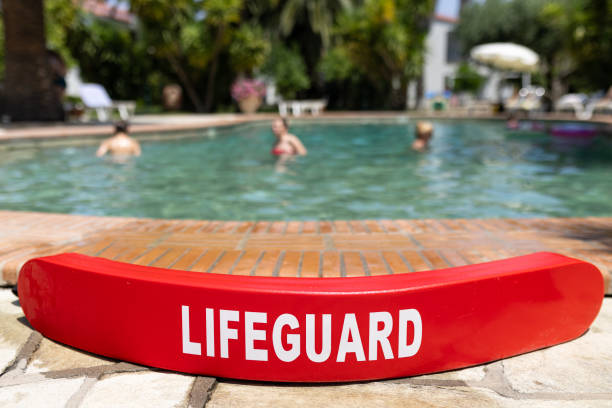Lifeguarding is more than just a summer job — it’s a vital public safety role that requires skill, responsibility, and rigorous training. In 2025, the path to becoming a lifeguard has evolved with updated certification standards, modern training techniques, and a growing demand for qualified professionals.
This comprehensive guide will walk you through everything you need to know about becoming a lifeguard in 2025 — from training and certification to job opportunities and career growth.
1. Understand the Role of a Lifeguard
Before stepping into the world of lifeguarding, it’s crucial to understand what the job truly entails:
-
Ensure Safety: Lifeguards are responsible for preventing accidents, enforcing safety rules, and providing emergency assistance.
-
Quick Response: Lifeguards must be ready to respond to emergencies, including drownings, spinal injuries, or other aquatic accidents.
-
Public Interaction: Clear communication with swimmers, parents, and facility management is key.
Being a lifeguard requires both physical fitness and mental alertness. It’s a position of trust and accountability.
2. Meet the Basic Eligibility Requirements
To become a certified lifeguard in 2025, you must meet specific criteria, which may vary slightly depending on your location. Generally, the following are required:
-
Minimum Age: Usually 15 or 16 years old.
-
Swimming Ability: Strong swimming skills are essential. You’ll be tested on timed swims, treading water, and retrieving objects from the pool.
-
Physical Fitness: You must be able to perform rescues and carry equipment and individuals when needed.
Having these foundational skills will make training smoother and safer.
3. Enroll in a Lifeguard Training Course
Once you meet the requirements, the next step is formal training. A comprehensive lifeguard course includes both theoretical and hands-on instruction.
Key Areas of Training:
-
Rescue Techniques: Includes in-water rescues, spinal injury management, and using rescue equipment.
-
CPR and First Aid: Lifeguards must be certified in CPR (Cardiopulmonary Resuscitation) and First Aid, especially for children and adults.
-
Surveillance Skills: Learn to scan zones effectively and detect signs of distress quickly.
-
Legal Responsibilities: Training includes an understanding of legal duties, such as consent, documentation, and liability.
The course typically runs for 20 to 30 hours and includes written exams and practical skill assessments.
4. Get Certified
After completing training, you’ll need to pass both a written test and practical evaluations to earn your certification.
What Certification Typically Involves:
-
Written Exam: Tests your knowledge of safety procedures, emergency response, and rescue protocols.
-
Skills Test: Demonstrates your ability to perform CPR, use an AED, and execute various water rescues.
-
Certification Validity: Most certifications are valid for two years and require renewal before expiration.
Ensure your certification is nationally recognized and complies with your state’s regulations.
5. Prepare for the Job Market
Lifeguarding can be seasonal or year-round depending on the facility type. After certification, start preparing to enter the workforce.
Job Settings for Lifeguards in 2025:
-
Community Pools & Waterparks
-
Beaches and Coastal Facilities
-
Fitness Clubs & Gyms
-
Schools and Universities
-
Resorts and Hotels
Lifeguard roles may be full-time, part-time, or even volunteer-based, depending on your interests and schedule.
6. Apply for Lifeguard Positions
Now that you’re trained and certified, it’s time to look for a job. When applying:
-
Create a Professional Resume: Highlight your certifications, swimming skills, and any related experience.
-
Prepare for Interviews: Be ready to discuss safety scenarios and how you’d respond under pressure.
-
Stay Flexible: Seasonal roles may lead to full-time opportunities if you’re open to different locations and shifts.
Use online job boards, community center announcements, or local recreation departments to find openings.
7. Maintain Your Certification and Skills
Your responsibility doesn’t end after getting the job. Lifeguards must continuously refresh their skills and renew certifications.
Ongoing Development Includes:
-
Recertification Courses: These keep your skills sharp and up to date with the latest protocols.
-
Physical Conditioning: Maintain strong endurance and strength through regular workouts.
-
Drills and In-Service Training: Many employers conduct routine training to ensure readiness.
Lifeguarding demands peak physical and mental performance — regular practice and training help meet these standards.
8. Explore Advanced Opportunities
Once you gain experience, there are multiple career paths and roles you can pursue:
-
Head Lifeguard or Supervisor
-
Aquatic Safety Instructor
-
Swim Coach or Instructor
-
Emergency Medical Technician (EMT)
-
Rescue Diver or Marine Safety Officer
These opportunities allow you to grow in the field of public safety and aquatic services.
9. Stay Informed About Industry Trends
2025 brings changes to how lifeguards are trained, managed, and employed. Staying updated helps you remain competitive and effective.
Trends to Watch:
-
Virtual Training Modules: Blended learning (online + in-person) is becoming more popular.
-
Increased Demand for Beach Lifeguards: Climate and travel trends have increased the need for oceanfront safety.
-
Technology in Lifeguarding: Drones, surveillance systems, and AI-assisted monitoring are entering aquatic facilities.
Being aware of these trends helps you adapt and excel in your role.
Conclusion
Becoming a lifeguard in 2025 is a rewarding journey that combines responsibility, skill, and service. Whether you’re looking for a part-time job or a long-term career in aquatic safety, the path is structured and accessible with the right guidance.
By following the steps outlined — understanding the role, getting trained, earning certification, and entering the job market — you position yourself as a trusted protector of public safety. Stay committed to learning, stay fit, and stay alert — the lives of others may depend on it.
Must Read: Lovely London









